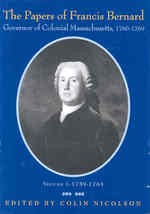- ホーム
- > 洋書
- > 英文書
- > Architecture
Full Description
Late in the nineteenth century, U.S. commercial and political interests began eyeing the countries of Latin America as plantations, farms, and mines to be accessed by new shipping lines and railroads. As their desire to dominate commerce and trade in the Western Hemisphere grew, these U.S. interests promoted the concept of "Pan-Americanism" to link the United States and Latin America and called on U.S. architects to help set the stage for Pan-Americanism's development. Through international expositions, monuments, and institution building, U.S. architects translated the concept of a united Pan-American sensibility into architectural or built form. In the process, they also constructed an artificial ideological identity-a fictional Pan-America peopled with imaginary Pan-American citizens, the hemispheric loyalists who would support these projects and who were the presumed benefactors of this presumed architecture of unification.Designing Pan-America presents the first examination of the architectural expressions of Pan-Americanism. Concentrating on U.S. architects and their clients, Robert Alexander Gonzalez demonstrates how they proposed designs reflecting U.S. presumptions and projections about the relationship between the United States and Latin America. This forgotten chapter of American architecture unfolds over the course of a number of international expositions, ranging from the North, Central, and South American Exposition of 1885-1886 in New Orleans to Miami's unrealized Interama fair and San Antonio's HemisFair '68 and encompassing the Pan American Union headquarters building in Washington, D.C. and the creation of the Columbus Memorial Lighthouse in the Dominican Republic.
Contents
Foreword by Robert W. RydellPreface: Entre autopista y puenteAcknowledgmentsPan-American Architecture ChronologyIntroduction: Entering Pan-AmericaMapping the Sources of the Pan-American IdeaThe Pan-American CitizenEqual Representation for All AmericansChapter 1. The Birth of Pan-American Architecture: Hemispheric Fairs, 1884-1901Logical Pan-Americanism at Two New Orleans ExpositionsBefore the White City: Quadricentennial Visions for 1892The Pan-American Exposition in an American Power City, 1895-1901Chapter 2. A Rubber-Fig Tree for the Patio: America's Peace Temple, 1907-1913The CompetitionAfter the CompetitionTransforming the "Latins" with Patio and PoolNuestra Pan-AmericaChapter 3. In Search of Modern Pan-America: The Columbus Memorial LighthouseKelsey's Perfect CompetitionPan-America's Heritage Is Explored in Stage OneKelsey Orchestrates the Second StageGleave's Transformative CrossBuilding the Unwelcomed Columbus MemorialChapter 4. Gateway to the Americas: Dreaming Interama, HemisFair LivingInterama and the Inter-American SubjectHemisFair '68 and New Liaisons with Las AmericasThe Last Hemispheric FairsEpilogue: Enter Here: The Great Pan-American WayNotesBibliographyIndex








